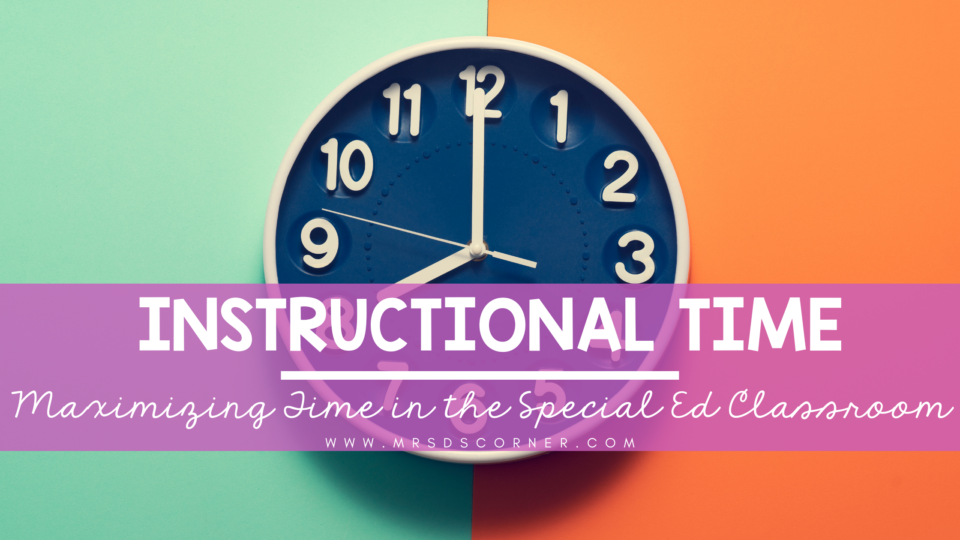As a special education teacher, maximizing instructional minutes is crucial for ensuring your students’ academic success. Every minute spent in the classroom counts, and making the most of this precious time is essential.


In this blog post, we will discuss practical and easy-to-implement strategies that will help avoid wasting time in the classroom and create an environment conducive to effective teaching and learning.
Set Clear Expectations and Routines
Establishing clear expectations and routines is vital in any classroom setting, but it holds particular significance in special education. Here are some strategies to consider:
Create Visual Schedules
Utilize visual aids, such as visual schedules or charts, to outline the daily routines and activities. This helps students understand what is expected of them and reduces transition time.
Implement Consistent Procedures
Develop consistent procedures for tasks like passing out materials, turning in assignments, or transitioning between activities. Clearly communicate these procedures to your students and reinforce them regularly.
Use Visual Cues
Incorporate visual cues or reminders for specific behaviors or actions you want students to exhibit. For example, use a stop sign image to signal when it’s time to stop talking and focus on the lesson.
Plan with Purpose
Efficient planning is a critical element in maximizing instructional minutes. You can optimize time usage and ensure that every minute contributes to student learning by being intentional with your lesson plans. Here are some tips:
Set Clear Objectives
Clearly define the learning objectives for each lesson. This allows you to focus on essential content and avoid unnecessary diversions.
Differentiate Instruction
Recognize the diverse needs of your students and plan accordingly. Develop strategies that allow you to provide individualized instruction while keeping the whole class engaged.
Prioritize Essential Skills
Identify the key skills or concepts that students need to master and prioritize those in your lesson plans. By focusing on the most critical content, you can optimize instructional time.
Utilize Technology Tools
Technology can be a powerful ally in maximizing instructional minutes in special education classrooms. Here are some ways to leverage technology effectively:
Interactive Whiteboards
Use interactive whiteboards to engage students in interactive activities, such as virtual manipulatives or multimedia presentations. This can enhance understanding and save time compared to traditional teaching methods.
Digital Assessments
Utilize online platforms or software that allows for quick and efficient assessment of student progress. This eliminates the need for manual grading and provides immediate feedback.
Digital Organization Tools
Take advantage of digital tools like online calendars or task management apps to streamline administrative tasks and stay organized. This frees up time for instructional activities.
Collaborate with Support Staff
Collaborating with support staff is essential for special education teachers to maximize instructional minutes. Work together to ensure a harmonious classroom environment:
Develop a Co-teaching Plan
If you have a co-teacher or support staff who has a background in education, develop a co-teaching plan that outlines each person’s roles and responsibilities during instruction. This allows for seamless transitions and shared responsibilities.
Communicate Regularly
Maintain open lines of communication with support staff through scheduled meetings or informal check-ins. Discuss any challenges or concerns that may impact instructional time.
Leverage Their Expertise
Tap into the expertise of support staff members by seeking their input on instructional strategies or accommodations. Utilize their knowledge to enhance student learning while optimizing time.
Maximizing instructional minutes is essential for special education teachers to ensure optimal student learning outcomes. Special education teachers can create an environment where every minute counts towards student growth and achievement by setting clear expectations, planning with purpose, utilizing technology tools, implementing effective classroom management strategies, and collaborating with support staff. Remember, small changes can make a significant impact on instructional time, so start implementing these strategies today and witness the positive difference they make in your classroom!

